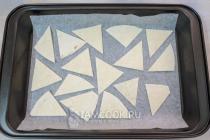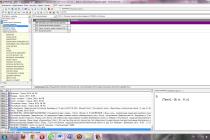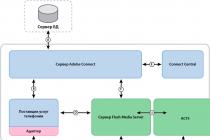Stanislav G. 5 years ago
Yandex Market
Super mom supports all processors and 4 nuclear extreme, it's just that for every percent on the Asus website there is its own BIOS, otherwise the glitches will be as they write below and above that. Swears at a percentage but works. Put the BIOS that is needed for this particular process and there will be happiness ... And it supports all the cool 2-4-core processes on the 1066-1333Mz tires ... look at the asus carefully there are 20 pieces of bios, if not more and you will be happy. I wanted to buy a NAS server for the Home Cloud so that from a TV, etc. worked ... and stupidly assembled on this mother so all store NAS servers just have a rest. So ... if the arms are straight, then everything will work out. I removed all the cooling and left one on the blower there is no noise at all and the temperature is 35 g. Learn ...
Show more
Advantages: Works for 9 years without shutdown
Disadvantages: No
Dmitry K. 6 years ago
Yandex Market
I totally agree with the previous speakers. The computer based on the board has been operating for the ninth year, the last two years as a home server with an 8 terabyte raid array. On workstation later took P5Q Turbo - no comparison. Constantly some kind of incomprehensibility in the work of the computer arises. Of the shortcomings, I can only note two points - the Q6600 works with a 4-core processor, but the BIOS constantly swears that it does not know such a processor. The processor appears in the list of supported, BIOS latest version... Well, I still did not understand with the raid - I tried to create a hardware REID 5, but an array of 2 terabytes was created from 4 terabyte disks, which is inadequate for REID 5. I had to make a software one.) In general, I would like to note the generally unpleasant moment that Asus is suddenly drops product support. It is sad.
Show more
Advantages: Reliability, performance, built-in RAID
Disadvantages: no special noted
Sergey Gladunets 7 years ago
Yandex Market
It has been working for seven years. Since 2007, I installed Core 2 Quad Q6600 2400Mhz (easily races up to 3600Mhz) and Hynix 4GB 800Mhz. At the end of summer 2008, I installed an Nvidia GeForce GTX280 vidyuhu (which worked for 13 months, after roasting for another 2 months) and along with it a 730-watt Hyper power supply. Now I'm sitting on a Radeon HD6870 and have been using an OCZ Vertex 64GB SSD as a system disk for the third year. I am planning to buy a Sound Blaster ZxR because I love good sound, the latest generation PCI-E slot (narrow) allows you to do this. Everything works like a clock. I am very pleased with my platform, because of the SSD and good coolers, everything works silently, I don't see any reason to switch to something new. By the way, I have been doing renovations since 2004 cell phones, and therefore you have to actively use USB - until now everything is clearly defined, it never fails. Thanks to the guys at Asus for a flawless product).
Show more
Advantages: Good, reliable, all necessary interfaces are present (Sata, IDE, E-Sata, USB, COM-Port, optical audio, etc.).
Disadvantages: A problem in some network games due to the built-in sound (it's more likely even in the drivers, but the manufacturer has stopped supporting this sound chip).
Guest 9 years ago
Yandex Market
not so picky about the additions and so the payment in all KUL!
Show more
Pluses: Opportunities for overclocking! cold north bridge (due to a well-thought-out cooling system with a standard fan on the bridge radiator)
Disadvantages: Every six months you have to wipe the dust and vacuum the body! :-)
ASUS has always done well with motherboards based on Intel chipsets. And the P5B series, which is based on the 965 series chipsets, is generally considered one of the most successful on the market. This series includes a huge number of different modifications - special overclocking versions, boards with improved configuration, boards for "advanced" office computers, etc. In our review we will take a look at one of the most affordable modifications, the board with the short name "P5B". Although this board has basic functionality, it shares with other, more expensive models, at least, the design of the printed circuit board and options in the BIOS Setup. This means that we can count on high performance and suitability for overclocking.
About the P965 chipset
Motherboards of the ASUS P5B series, including the basic version under consideration, are based on one or another modification of the Intel P965 or G965 series chipset. We have already described the characteristics and functionality of Intel chipsets many times, compared them with their predecessors and some analogues. Now let's dwell on some features of the P965 chipset that will interest us in relation to the motherboard in question.
First of all, we note that Intel chipsets have no real analogues in their niche. In the field of budget solutions, of course, there are some alternatives, for example, chipsets from VIA and SIS. Expensive motherboards are sometimes based on NVIDIA chipsets, which, however, are still inferior to P965 and 975X in a number of points. And for general-purpose mid-range motherboards, there are no other options besides Intel.
However, Intel chipsets are quite expensive. Even so functional simple model like ASUS P5B has a very high price for its class. Only on stage new series Intel chipsets, and this event should happen this summer, prices for motherboards of the previous generation will begin to decline.
The Intel P965 chipset can be equipped with various modifications of the ICH8 south bridge, and this is not reflected in its name, as is the case with nForce chipsets. Let's say ASUS boards P5B and P5B-E are formally based on the same P965, but differ in functionality. The first one is equipped with the basic modification ICH8, which does not support RAID technology and contains 4, not 6 Serial ATA ports.
Also note that the P965 chipset does not support the Parallel ATA interface. At the same time, most of the optical drives sold today are connected via this interface. To compensate for this annoying drawback, motherboard manufacturers, even Intel itself, install an additional controller on motherboards. Usually the inexpensive JMicron controller becomes their choice.
ASUS P5B. Design, functionality
In the case of the P5B series, the developers from ASUS decided not to use the same design for all motherboards in the series. Different models overlap in the wiring of certain elements, the design of the power circuits, the layout, the number and position of the slots, but differ in the number of additional controllers, their location, the presence of certain internal connectors.
So, on the P5B board we will find only three additional microcircuits - an audio codec, a network controller and the already mentioned JMicron chip. Let's start with the latter. The JMB363 controller, the most widespread and popular among various board manufacturers, supports both Parallel ATA and Serial ATA. There is only one IDE connector on the motherboard, which is supposed to be used for connecting an optical drive. Serial ATA ports support RAID level 0 or 1. However, ASUS developers decided to use one of the ports to connect an external hard drive with an External SATA (SATA-on-the-go) interface - it is located on the ports panel. Therefore, organizing RAID on the P5B is hardly possible, this is a rather significant drawback of the board.
The audio codec from Analog Devices differs for the better from the more common Realtek codecs in sound quality; there is also nothing special to write about the Realtek RTL8111B network controller.
Two digital S / PDIF connectors, six analog connectors, 4 USB port, PS / 2 ports. The COM port is removed, but if desired, it can be returned ("pants" with a connector are not included in the package), the LPT port is preserved.
| Manufacturer | ASUSTeK | ||
| Model | P5B | ||
| Chipset | Intel P965 Express | ||
| Socket | Socket T (LGA775) | ||
| Form Factor | ATX, 30.5 x 23 cm | ||
| average price | $125-150 | ||
| Functionality | Extension | ||
| Integrated graphics: | - | Memory: | |
| HDD / ODD Connection: | type of | DDR2 | |
| controller no. 1 | (built-in) | ECC | - |
| Serial ATA | 3 Gbps | slots | 2+2 |
| RAID | - | Expansion slots: | |
| eSATA | - | PCI Express x16 | 1 |
| ports | 4 | PCI Express x8 | - |
| Parallel ATA | - | PCI Express x4 | - |
| RAID | - | PCI Express x1 | 3 |
| channels | - | PCI | 3 |
| controller # 2 | JMicron JMB363 | other | - |
| Serial ATA | 3 Gbps | Internal connectors: | |
| RAID | 0, 1 | nutrition | 24+4 |
| eSATA | + | built-in sound: | |
| ports | 2 | Front Panel | + (AC "97 / HDA) |
| Parallel ATA | there is | CD-In | + |
| RAID | - | Aux-In | - |
| channels | 1 | S / PDIF In | - |
| Floppy drive | + | S / PDIF Out | + |
| Built-in sound: | USB | 3 x 2 | |
| interface | HD Audio | Firewire | - |
| codec (controller) | ADI AD1988A | Case intrusion | + |
| channels | 7.1+2 | IrDA | - |
| S / PDIF | Out | SMBus / I2O | + |
| detection | + | other | COM |
| reassignment | + | External connectors: | |
| 3D | EAX1 / 2, DS3D, A3D | PS / 2 | 2 |
| Dolby / DTS encoding | - | COM | - |
| microphones | x2, NR | LPT | 1 |
| other | - | Game | - |
| Built-in network: | USB | 4 | |
| controller | Realtek RTL8111B | Firewire | - |
| codec | (built-in) | Audio-jack | 6 |
| GbE support | + | S / PDIF coaxial | 1 |
| Virtual Tester | - | S / PDIF optical | 1 |
| other | - | VGA | - |
| Wi-Fi: | DVI | - | |
| controller | - | LAN RJ-45 | 1 |
| protocols | - | eSATA | 1 |
| Firewire | - | other | - |
| other | - | ||
The lack of functionality can be compensated for by expansion cards, since the P5B has enough slots. The developers managed to place three PCI and PCI Express x1 slots in such a way that the devices will not interfere with each other: the video card does not block the memory latches, PCI cards do not rest against the radiator or IDE connector, etc. The processor area is practically free of high capacitors, the power connectors and fan headers are very well located.
However, there are a couple of inconvenient aspects in the motherboard design. We did not like the IDE connector - it is located at the very bottom (in case of vertical orientation of the case), and to connect an optical drive to it, the latter will either have to be lowered into the last compartment of the case, or a cable should be laid over the video card. The jumper for clearing the CMOS is also very inconveniently located, it is difficult to feel it with your fingers: the video card, cables, and the cable from the fan interfere.
The P5B is equipped with a three-channel CPU power regulator (VRM), not too powerful for extreme overclocking. No cooling is used for transistors. The microcircuits of the chipset are individually equipped with heatsinks: the north bridge MCH - large and high, spring-mounted, the south bridge ICH - flat needle, with ordinary plastic latches.
BIOS Setup
We are pleased to note that the younger model of the series retained all the necessary settings, so that it can be used without any problems for experiments with optimization and overclocking of memory and processor:
- FSB frequency - up to 650 MHz in 1 MHz steps;
- memory multiplier - 1: 1, 5: 4, 3: 2, 5: 3 and 2: 1 of the FSB frequency;
- PCI Express frequency - up to 150 MHz in 1 MHz steps;
- voltages: Vcore (up to 1.7 V in 0.0125 V steps), Vdimm (up to 2.45 V in 0.10 or 0.05 V steps), Vtt (1.2 - 1.45 V), voltages on MCH (up to 1.7 V) and ICH (up to 1.8 V) ...
The P5B has very few settings for the memory controller in the BIOS: the basic timings (tCL, tRAS, tRCD, tRP, tWR) are supplemented by the less relevant for overclocking tRRD, tWRD, tRWD, etc.
The entire set of settings made can be saved in CMOS memory; only two profiles are available. Also, the contents of the BIOS and CMOS can be stored on a hard disk, USB flash drive or floppy disk; The BIOS built-in utility supports FAT-formatted devices.
A proprietary anti-freeze system called C.P.R. (CPU Parameters Recall), eliminates the need for clearing CMOS when freezing. It is enough to turn off the power, and then turn it on again, as the BIOS boots the system with safe settings and prompts you to correct the incorrect parameters without clearing them. Since C.P.R. works correctly in 95% of cases (except for some memory settings, the system cannot detect the fact of freezing), the savings in time and nerves during overclocking are enormous.
We will also mention the proprietary BIOS firmware utility that supports USB flash drives and hard drives... It can be launched directly from the BIOS or by pressing a keyboard shortcut during bootup (POST).
Testing
Most users consider the incredible overclocking headroom to be the main advantage of the modern Intel platform (the Core 2 Duo processor plus the 965 series chipset). Many motherboards are capable of operating at over 500 MHz FSB (at a nominal 266 MHz), and Core processors 2 Duo - at 3.5 GHz or higher. At the same time, the power consumption and heating of the components remain within the normal range, liquid cooling or powerful (and at the same time noisy) coolers are not at all necessary. Therefore, we will start with overclocking.
Overclocking. We were unable to achieve stable operation from the board with the FSB frequency equal to 500 MHz. The board confidently booted at both 480 and 490 MHz, but problems were periodically observed: freezes, including during boot, inability to reboot, etc. Stable operation was observed up to about 475 MHz FSB. We suspect that the problem lies in the insufficiently efficient cooling of the chipset with a significant increase in its supply voltage (1.55 V and higher); we plan to return to this issue later.
Our test configuration included:
- Core 2 Duo E6400 processor, revision B2: nominal frequency 2.13 GHz (266 MHz bus), 2 MB L2 cache;
- ASUS P5B board, revision 1.04G, BIOS version 1102;
- two Corsair XMS2 DDR2-800 1 GB memory sticks;
- Foxconn GeForce 7900GS video card;
- hard drive WD Caviar SE 250 GB, Serial ATA / 300;
- GlacialPower 550 W power supply;
- operating system Windows XP SP2 32bit.
Without lowering the multiplier, the processor worked stably at 3.4 GHz (425 x 8) with a Vcore of 1.45 V, which is about 60% gain; further overclocking required a more powerful cooler than the GlacialTech 5050. We decided to stop at this mark and not take additional measures to improve cooling. The memory worked at 850 (425) MHz with 5-5-5-15-2 timings. We also tested the board at nominal frequencies to determine the amount of performance gain from overclocking.
| Motherboard | ASUS P5B | ASUS P5B @ 425 |
| - chipset | Intel P965 | |
| CPU | Core 2 Duo E6400 | |
| - clock frequency | 2.13 GHz | 3.4 GHz |
| - L1 cache | 2 x 64 KB | |
| - kzsh L2 | 2 Mb | |
| Memory | Corsair XMS2 | |
| - volume | 2 x 1 GB | |
| - clock frequency | 400 MHz (DDR2-800) | 425 MHz |
| - delays | 5-5-5-15-2 | 5-5-5-15-2 |
| Video card | GeForce 7900GS | |
| HDD | WD Caviar SE | |
| Comprehensive test (Sysmark04 SE) | ||
| Office Productivity | 228 | 286 |
| Communication | 197 | 225 |
| Document Creation | 276 | 387 |
| Data Analysis | 219 | 269 |
| Internet Content Creation | 364 | 532 |
| 3D Creation | 324 | 494 |
| 2D Creation | 444 | 630 |
| Web Publication | 336 | 483 |
| Compression and archiving | ||
| MPEG2 -> WMV9 | 12.75 | 19.2 |
| MPEG2 -> XviD | 23.28 | 34.5 |
| MPEG2 -> DivX | 38.12 | 57.22 |
| WAV -> MP3 | 98 | 62 |
| WAV -> AAC | 157 | 100 |
| WinRAR 3.41 | 1082 | 1230 |
| 7-Zip 4.42 | 2503 | 2934 |
| Other tests | ||
| Photoshop CS2 | 3.4 | 5.1 |
| Premiere Pro 2.0 | 11.24 | 17.24 |
| Visual Studio .NET 2003 | 327 | 218 |
| Solidworks 2005 | 2.08 | 2.92 |
| Pro / Engineer WildFire 2.0 | 2.03 | 2.89 |
We ran a series of tests and got the following results:
- in the complex test SYSMark 2004 SE the increase was from 14% (mail and Internet) to 53% (3D Studio Max 8); graphics and video processing programs won at least 40%;
- when video is compressed, the gain is about 50% regardless of the codec (DivX, Xvid, WMV);
- archivers won no more than 15% - for them the speed of access to memory is more important;
- v Adobe photoshop CS2 and Adobe Premiere Pro 2, again, there is an increase of about 50%;
- 3D design programs received about 40% of the winnings;
- compilation speed in Visual Studio .NET has increased by one third.
Thus, we get quite tangible and significant benefits from overclocking the processor, and without spending on special expensive memory (many DDR2-800 modules can work at 425 MHz), a power supply unit, and a cooler.
conclusions
The ASUS P5B motherboard can be described as a well thought out, balanced and reliable (according to service centers' data) product that fits well into its niche. Having limited functionality, this board offers ample opportunities for expanding and connecting external devices, has a well-developed BIOS with a sufficient number of options. Convenient when assembling, convenient when setting up, allows you to overclock the processor decently. Unfortunately, the cost of the board for its class is very high, which does not allow recommending it to a wide audience of users.
- good layout;
- the presence of an eSATA port;
- fan control support;
- thoughtful BIOS Setup;
- effective system of protection against freezes;
- simple and convenient BIOS flashing utility;
- the ability to overclock the processor by bus (up to 470-478 MHz).
- overcharge;
- inconvenient location of the IDE connector;
- not designed for extreme overclocking;
- BIOS "oddities".
Max KURMAZ,
[email protected]
GIGAMARK project
We thank CDL Systems for the provided ASUS motherboard
Thank you online storeEvent-pc.com for the provided Intel Core 2 Duo processor
Thank you online storeUltraprice.by for the provided memory Corsair
After the appearance of a new line of ASUS P5K motherboards based on the new Intel P35 Express chipset, it may be somewhat irrelevant to describe the motherboard based on the "outdated" Intel P965 Express chipset. But in fact, the ASUS P5B series of motherboards is still a very interesting and demanded product. The new chipset did not make a tangible leap in performance, yes, it supports Intel processors with a 1333 MHz bus, but these processors are not on the market yet. The line of ASUS P5B motherboards will be in demand for at least half a year, because the price for the recently released series of motherboards is currently a bit overpriced. In this review, we will look at the younger model of the line of motherboards based on the Intel P965 ASUS P5B chipset.
ASUS P5B motherboard specification:
|
Manufacturer |
|
|
North bridge |
|
|
South bridge |
|
|
CPU socket |
|
|
Supported processors |
Intel Core 2 Quad / Intel Core 2 Extreme / Core 2 Duo / Pentium Extreme / Pentium D / Pentium 4 / Celeron D |
|
System bus, MHz |
1066/800/533 MHz |
|
Memory used |
DDR2 800/667/533 MHz |
|
Memory support |
4 x 240-pin DIMM dual channel architecture up to 8GB |
|
Expansion slots |
1 x PCI-E x16 |
|
Disk subsystem |
ICH8 Southbridge supports: The optional JMicron JMB363 controller supports: |
|
Sound subsystem |
SoundMAX ADI AD1988A 8-channel |
|
LAN support |
Realtek PCI-E Gigabit Network Controller (RTL8111B) |
|
24 pin ATX power connector 4 pin ATX12V power connector |
|
|
Cooling |
Radiator on the north and south bridge |
|
Fan connectors |
1 x CPU |
|
External I / O ports |
1 x Parallel Printer Port |
|
Internal I / O ports |
3 x USB support 6 USB ports |
|
8 Mb Flash ROM, AMI BIOS, PnP, DMI2.0, WfM2.0, SM BIOS 2.3, ACPI 2.0a, ASUS EZ Flash 2, ASUS CrashFree BIOS 3 |
|
|
Overclocking capabilities |
Changing the FSB frequency, PCI-Express frequency, memory frequency, voltage on the processor and memory. |
|
Proprietary technologies |
ASUS C.P.R. |
|
Package Contents (Important) |
4 x SATA cable |
|
Form factor Dimensions, mm |
ATX 12 "x 9.6" |
|
Products webpage |
The latest BIOS version can be downloaded from the official page. |

The motherboard is packed in a cardboard box with support marked operating system Windows Vista and Quad Core Intel processors.

The back of the package shows a photo of the board with footnotes of its best qualities and lists the proprietary technologies supported by the product. In a little more detail, let's dwell on the technologies that the manufacturer highlighted:
AI NOS(Non-delay Overclocking System) – Instant overclocking system that intelligently detects system load and automatically increases its performance.
AI Gear–This technology allows you to select a profile by which the frequency of the processor, system bus and vCore voltage will be regulated, thereby reducing noise and power consumption.
AI Nap- technology that minimizes noise and energy consumption. It puts the computer into a power saving mode without shutting down applications, and wakes up the system by simply pressing a button on the keyboard or mouse.
If you have a desire to familiarize yourself in more detail with the entire list and description of ASUS proprietary technologies that this motherboard supports, then this can be done on the manufacturer's website.

The ASUS P5B motherboard is very well-equipped. The kit includes:
- motherboard;
- CD with software and drivers for Windows Vista;
- user manual on English language, quick installation instructions,
- FDD loop,
- loop UltraDMA 133/100/66;
- 4 Serial ATA cables;
- two power adapters to SATA devices, with two connectors;
- branded sticker;
- ASUS Q-Connector;
- cover for the rear panel of the case;
- bracket with two USB connectors.
Note the absence of a bracket for a COM port.

The ASUS P5B motherboard is pretty well-built, but of course, there are some small remarks that we will definitely make here. Firstly, only a small board can be installed in the topmost PCIE x1 slot, because the north bridge heatsink is located very close. Aluminum radiators are installed on the north and south bridges - I must say that during long testing and overclocking they did not do their job very well.

The Floppy connector is deployed, and it will not always be convenient to connect to it in small cases, so we recommend connecting the ribbon cable before installing the board in the case. The Intel ICH8 South Bridge supports four SATA II ports, without the ability to form RAID arrays. These four SATA connectors are located on the right corner of the board. Besides them, there are two more - one is located near the PCI slots, and the other External SATA port is brought out to the rear panel. Operation and organization of two hard drives only JMicron JMB363 controller can provide RAID-arrays 0,1 and JBOD. Note that it is completely inconvenient to use the external External SATA port to form arrays. In addition, the controller provides the only IDE connector on the board, with the ability to connect two devices.

The motherboard has three PCI slots, three PCIE x1, and one for a PCIE x16 video card.
Other notable features of interfaces and controllers include:
- support for ten USB ports, of which four are brought to the rear panel;
- one COM port;
- PCI-E Gigabit LAN controller (RTL8111B) with a transfer rate up to 1 Gbps;
- HDA codec of eight-channel sound SoundMAX ADI AD1988A with S / PDIF output and Noise Filter technology.

Three-channel power stabilizer, assembled on reliable polymer capacitors 680 uF x 4V and on N-channel field-effect transistors NIKO-SEM P0903BDG (25V, 9.5mOhm, 50A). Unfortunately, there are no additional transistor cooling elements.

The rear panel displays the following ports: two PS / 2 for mouse and keyboard, parallel (LPT), six switchable audio ports, 4 USB connectors, RJ45 for network connections, SATA On-the-Go, coaxial and optical S / PDIF. Note the lack of a COM port, which can sometimes be useful.
Four fans can be connected to the board, one of which is a 4-pin processor fan, and the other three are three-pin. The CPU cooler connector is slightly distant from the LGA775 and is located in the upper part, near the memory slots. The other three connectors are conveniently spaced across the board, which provides a good choice of where to connect the case fans. The Q-Fan Control technology automatically adjusts the rotation speed of the processor cooler powered by the CPU Fan connector and two more case fans connected to the CHA-FAN 1-2 connectors.
The ASUS P5B motherboard uses AMI BIOS, with a large selection of settings required for successful system overclocking.
Overclocking capabilities:
- The change clock frequency FSB from 100 to 400 MHz in 1 MHz steps (manual input);
- Selecting the operating memory frequency (DDR2-533 / 667/800/889/1067) and changing the memory timings (CL, RCD, RP, RAS, 1T / 2T);
- Changing the PCI Express bus frequency from 90 to 150 MHz in 1 MHz steps;

Setting the DDR2 memory supply voltage from 1.8 V to 2.45 V, in 0.05 V steps or turning on the Auto adjustment mode;
- Changing the voltage of the processor core from 1.225 V to 1.7 V with a step of 0.0125 V;

Voltage change FSB Termination 1.2 / 1.3 / 1.4 / 1.45 V;

Changing the supply voltage of the north bridge 1.25 / 1.4 / 1.55 / 1.7 V;
- Changing the voltage supply of the core of the south bridge (SATA, PCIE) 1.5 / 1.6 / 1.7 / 1.8 V;
- Changing the supply voltage of the ICH Chipset 1.057 / 1.215 V;
- Change the processor multiplier from 6x to max.

In the Hardware Monitor window, you can monitor:
- temperature of the motherboard and processor;
- rotational speed of the processor cooler and two other fans in the case;
- processor core voltage;
- the voltage value of the main power lines 3.3V, 5V, 12V.
In addition, it is possible to enable the CPU Q-Fan and Chasis Q-Fan functions, which are responsible for controlling the rotation speed of the processor cooler and case fans, respectively.
Carrying out the standard procedure for testing the capabilities of the system bus, we were able to raise its frequency to 470 MHz, but we are sure that this is far from the limit. Unfortunately, we only had DDR2-800 memory at our disposal, if we had something quicker, then the result, for sure, would have been better.

Testing
The following hardware was used to test the capabilities of the motherboards.
|
CPU There is no noticeable performance difference between motherboards based on the new Intel P35 Express chip compared to motherboards based on the Intel P965 Express chip, all indicators are actually the same. conclusions ASUS P5B motherboard is a good basis for computer systems based on modern Intel processors, the board shows excellent performance and has good opportunities overclocking. Unfortunately, the ASUS P5B has several drawbacks. The Intel ICH8 South Bridge does not know how to organize RAID arrays, therefore, if necessary, you will have to use the capabilities of the additional JMicron JMB363 controller, which supports only two connectors, one of which is located on the rear panel. Also, a serious drawback, as it seemed to us, is the very hot bridges and the absence of a cooling system on the power stabilization unit. If the southbridge radiator was hot during testing, then the northbridge radiator was just hot. Although the computer worked stably at the same time, there is still some concern about the safety of the chipset under prolonged loads on the system. Therefore, if you decide to do overlocking, then keep this in mind, perhaps it makes sense for you to choose a more expensive motherboard with a better cooling system, or to take care of improving the cooling yourself. The advantages include:
The disadvantages are:
We express our gratitude to PF Service LLC (Dnepropetrovsk) for the motherboards provided for testing. Article read 112548 times
| |||||||||
Everyone has long been accustomed to the ASUS motherboard production scheme, when several modifications are obtained from one basic model - most often Deluxe and Premium are added to the "regular" model. In this case, the PCB for the boards, as a rule, is used the same, and the only difference is in the completeness of its filling and the variety of configuration. Even when the board underwent some revision, it visually remained very similar to the rest of the series. But the ASUS P5B motherboard does not fit into the usual scheme. it has very little in common with ASUS P5B Deluxe-Wi-Fi, which we visited earlier.
As you can see, motherboards differ not only in the color of the PCB and the completeness of filling the seats with microcircuits. Differences are everywhere: in power schemes; in the set and number of expansion slots; in the arrangement of chips and connectors ... But what is there to consider, with a biased approach, they can generally be regarded only as very distant relatives (only due to the use of identical chipsets as a basis). Therefore, we will not draw parallels, but we will examine the ASUS P5B motherboard as an independent product with a budget PCB coloring and not the most democratic price.

ASUS P5B specification
|
CPU |
Socket LGA775 (compatible with Intel PCG 05B / 05A / 06B); Intel Pentium 4 (Prescott (2M) / Gallatin / CedarMill) with a bus frequency of 533/800/1066 MHz; Supports processors with Hyper-Threading Technology; |
|
Intel P965 Northbridge with Intel Fast Memory Access Technology; Bridging between bridges: DMI; |
|
|
System memory |
Four 240-pin DDR2 SDRAM DIMM slots; |
|
One PCI-Express x16 slot; |
|
|
Expansion options |
Three 32-bit PCI Bus Master slots; |
|
Built-in sound SoundMAX ADI AD1988A 8-channel; |
|
|
Realtek PCI-E Gigabit Network Controller (RTL8111B); |
|
|
Opportunities for overclocking |
FSB frequency change from 100 to 650 MHz in 1 MHz steps; Changing the PCI-Express frequency from 90 to 150 MHz in 1 MHz steps; Changing the voltage on the processor and memory; |
|
Disk subsystem |
Four Serial ATA II (on Intel ICH8); The optional JMicron JMB363 controller supports: 1 internal SATA II 1 external SATA II RAID 0, RAID 1 and JBOD |
|
8 Mbit Flash ROM; |
|
|
External connectors: 1x LPT, 1x Coaxial S / PDIF, 1x Optical S / PDIF, 1x External SATA, 1x LAN, 4x USB2.0 / 1.1, 8-channel audio, 2x PS / 2 for mouse and keyboard; Internal connectors: 1x FDD, 1x IDE, 5x SATA II, 3x USB 2.0 with 2 ports, 1x S / PDIF, 1x COM, 1x ADH, 1x CPU fan, 2x Chassis fan, 1x Power fan, 1x Chassis intrusion, 1x Front panel audio, 1x CD audio in, 1x 24-pin ATX power, 1x 4-pin 12V power, 1x system panel. |
|
|
Power management |
Wake up from PCI devices, modem, mouse, keyboard, network, timer and USB; |
|
Monitoring |
Tracking the temperature of the processor, motherboard, input voltages and processor core, rotation speed of four fans; |
|
ATX form factor, 218mm x 305mm (8.6 "x 12"); |
|
|
Proprietary software |
ASUS PC Probe II Anti-virus software (OEM version) |
Package

The motherboard is packed in a cardboard box, which, in addition to the board, contains IDE and SATA cables with power adapters, a cover for the rear panel of the case, CD with drivers and additional software. All this will be discussed below.
Equipment
- Motherboard;
- CD with software and drivers;
- One ATA-133 cable, FDD cable;
- Four Serial ATA cables + two power adapters (two connectors on each);
- User manual in English, quick installation instructions;
- Cover for the back panel of the case;
- One ASUS Q-Connector Kit (USB, System panel; retail version only);
- ASUS logo sticker.

We draw your attention to the fact that, despite the presence of a COM port on the motherboard, the package bundle does not include a bracket for outputting this port to the rear panel. For the sake of fairness, we note that COM ports are currently used very rarely, so we will not consider this as a big disadvantage. By the way, the relative of the hero of today's review P5B Deluxe Wi-Fi does not have the very possibility of outputting a COM port at all.
Also, despite the presence of six additional USB- there are only two ports on the board that can be brought out to the rear panel using the tools supplied in the kit. So for the output of the COM port and additional USB, you will have to purchase the corresponding accessories separately.
The conclusion can be made as follows: the package bundle, taking into account the price on a 5-point scale, pulls by 4. At least, the output bar for USB ports, which are constantly in short supply, would not be superfluous.
Now let's talk about the board design. In general, it can be considered quite convenient, but there are a couple of nuances that can create certain inconveniences and which are worth paying attention to. So, everything is in order.
There are 4 connectors for coolers on the board. The first connector, the 4-pin CPU_FAN for the processor cooler, is located above the RAM sockets, not far from the processor socket, but not too close to it (as is done, for example, on the MSI P965 NEO board), so there are problems with connecting the power cable should not arise. The PWR_FAN connector is located next to it.

There are also two additional 3-pin connectors CHA_FAN1 and CHA_FAN2 for case coolers. They are located in such a way that it is convenient to install one fan on the front panel of the case, and one on the back. Power connectors on board 2: main 24-pin EATXPWR and additional 4-pin EATX12V. The motherboard will require a power supply that meets the ATX 12V 2.0 specification.

Three-phase power stabilizer - modest. It consists of 9 680 uF capacitors. Chipset cooling is passive, without the use of fans. A rather massive heatsink is installed on the Intel P965 north bridge. Traditionally, a smaller radiator is also installed on the south bridge.

To the right of the north bridge, there are four 240-pin DIMM sockets for DDR2 memory modules. In fact, they are divided into two groups of two connectors. The slots of the first group belong to one controller channel, the slots of the second - to the other. It is possible to organize two-channel memory access. To do this, install memory strips in slots of the same color.
It should be noted that the board supports DDR2 533/667/800 memory modules. The maximum total RAM is 8 GB.
ASUS P5B is equipped with three standard PCI slots, three PCI Express x1 slots and one PCI Express x16 slot.

Pay attention to the top PCI Express x1 slot. As you can see, next to it is the northbridge cooling heatsink so that only a relatively small board can be installed in this connector. There is also a green LED indicator on the board that shows the state of the board.
Versatile ports and storage support
In addition to the standard Intel ICH8 controller supporting four SATA II ports, an additional JMicron JMB363 controller is used. It supports one additional internal SATA II port, one External SATA port located on the back of the board, and one IDE port to connect two compatible devices... Also, using the JMicron controller, you can organize RAID 0, RAID 1 and JBOD arrays.

So what do we have? As a result, 8 hard drives can be connected to the board: 6 Serial ATA II drives and two with Parallel ATA interface. Now let's move on to USB ports. There are four USB 2.0 ports on the rear panel of the board. In addition, it is possible to connect six more connectors using additional brackets. There is no support for the FireWire interface on the motherboard. Taking into account the cost of the board, the absence of an IEEE 1394 controller can be considered a small drawback.
Sound subsystem
Now about the sound system. The AD1988A chip is installed as a codec, which allows outputting sound with a sampling frequency of 192 kHz and has 10 DACs and 6 ADC chips. Eight-channel HD Audio is supported, there is a function of detecting the type of connected devices, reassignable functions and multi-stream audio technology that allows you to send different audio streams to different channels. The signal-to-noise ratio is 105 dB. The Noise Filter technology is also used. This function recognizes in the incoming audio stream repetitive and constant noises and then removes them on recording.

Let's stop at the ports sound card... The P5B motherboard supports S / PDIF audio out, which makes it easy to connect your computer to your home theater with acoustic systems via optical or coaxial cable. We also see 6 more pins of the sound card. Everything is traditional here, a subwoofer is connected to the orange port, the rear speakers in the 4/6/8 channel configuration are connected to the black one, and the side speakers in the 8-channel configuration are connected to the gray one. Pink is traditionally used to connect a microphone, blue is a line input, and green is used for headphones in a 2/3 channel system, or for connecting front speakers in a 4/6/8 channel sound system.
Network
To support network connections, a Realtek RTL8111B (Gigabit Ethernet) network controller is provided, which is connected via the PCI Express bus and supports operating speeds up to 1 Gb / s.

Proprietary technologies
In order to ensure performance with minimal noise, the technology AI Gear allows you to select a profile that adjusts the system bus frequencies and vCore voltage. This ensures a reduction in noise and energy consumption. AI Nap also aims at minimizing noise and making energy use more economical. With its help, you can instantly put your computer into power saving mode without turning off applications ("standby mode"). Technology Q-Fan 2 provides regulation of the rotational speed of the processor and case cooler.
Rear panel of the board
Let's take a look at the back panel. Obviously, the manufacturer does not offer us anything original. As we have already noted, there is no COM port, which is gradually less and less likely to find a place in modern motherboards. The panel displays a parallel port (LPT), 4 USB ports, an RJ-45 connector for network connections, one external Serial ATA port, sound card outputs and, of course, two PS / 2 ports for a mouse and keyboard.


A Clear CMOS (CLRTC) jumper is installed near the FDD connector, with which you can clear the RTC data of the RAM memory by returning BIOS settings to the standard ones.
| Content: | ||
|
|
The number of motherboards supporting Intel Core 2 Duo processors is growing steadily. Recently, ASUS motherboards on the P965 chipset appeared in stores, among which the most powerful and interesting is ASUS model P5B Deluxe-WiFi. The main features of this product are the presence of two PCI Express x16 slots, support for wireless Wi-Fi (however, due to the installation of the corresponding module, the number of USB ports has been reduced from 10 to 8) and the presence of an effective passive cooling system for the chipset and a power supply module (8-phase !). In addition, there is one interesting component in the package bundle, but let's not get ahead of ourselves ...
ASUS P5B Deluxe-WiFi Specification
| CPU | - Intel Pentium 4 (Prescott (2M) / Gallatin / CedarMill) with a bus frequency of 1066/800/533 MHz;
- Dual-core Intel Pentium D / EE (Smithfield / Presler) with a bus frequency of 800/1066 MHz; - Intel Celeron-D (Prescott) with a bus frequency of 533 MHz; - Support for Intel Core 2 Duo; - Socket LGA775; - Support for processors with HyperThreading technology; |
| Chipset | - Northbridge Intel® 82P965 Memory Controller Hub (MCH);
- Southbridge Intel® 82801HR Enhanced I / O Controller Hub (ICH8R); - Communication between bridges: DMI; |
| System memory | - Four 240-pin DDR2 SDRAM DIMM slots;
- Maximum memory capacity 8GB; - Supports DDR2 533/667/800/889/1066 memory; - Possible dual-channel memory access; - Power indicator; |
| Graphics | - Two PCI Express x16 slots; |
| Expansion options | - Three 32-bit PCI Bus Master slots;
- One PCI Express x1 slot; - Eight USB 2.0 ports (4 built-in + 4 additional); - Two ports IEEE1394 (Firewire; one built-in + 1 additional); - Built-in High Defenition Audio 7.1; - Two network controllers Gigabit Ethernet; - Wi-Fi controller(802.11g); |
| Opportunities for overclocking | - Changing the FSB frequency from 100 to 650 MHz in 1 MHz steps;
- Changing the voltage on the processor, memory, FSB, SATA, PCI-E and chipset (MCH + ICH); - ASUS NOS (Non-Delay Overclocking System) technology; - ASUS AiBooster utility; |
| Disk subsystem |
- 1 channel UltraDMA133 / 100/66/33 Bus Master IDE (JMB363; supports up to 2 ATAPI devices); - SerialATA II protocol support (6 channels - ICH8R, with RAID support); - SerialATA II protocol support (2 channels - JMB363, with support for RAID 0,1, JBOD); - Supports LS-120 / ZIP / ATAPI CD-ROM; |
| BIOS | - 8 Mbit Flash ROM; - AMI BIOS with support for Enhanced ACPI, DMI, Green, PnP Features; - ASUS EZ Flash 2 technology; - ASUS CrashFree BIOS 3 technology; - ASUS MyLogo2 technology; - Multi-languages BIOS; |
| Miscellaneous | - One port for FDD, one serial port, ports for PS / 2 mouse and keyboard;
- Power indicator on the board; - STR (Suspend to RAM); - SPDIF Out; |
| Power management | - Wake up from modem, mouse, keyboard, network, timer and USB;
- Main 24-pin ATX power connector; - Additional 8-pin power connector; |
| Monitoring | - Tracking the temperature of the processor, system, voltages, rotational speed of five fans;
- ASUS Q-Fan 2 technology; - ASUS AI Gear technology, AI Nap; - ASUS PC Probe II utility; |
| The size | - ATX form factor, 245mm x 305mm (9.63 "x 12"); |
Box
The box with the ASUS P5B board is inside the dust jacket:
One page flips down, and the user can briefly familiarize themselves with all the proprietary ASUS technologies.
Equipment
- Motherboard;
- CD with software and drivers;
- CD with additional software (InterVideo software package) + description;
- One ATA-133 cable, FDD cable;
- Six SerialATA cables + three power adapters (six connectors);
- User manual in English;
- Bracket with an additional Firewire port;
- Bracket with 2 additional USB2.0 ports;
- Wi-Fi antenna;
- ASUS WiFi Solo User Guide;
- Additional fan;
- A set of additional connectors;
- Cover for the back panel of the case;
- ASUS logo sticker;
- SoundMAX microphone.
There are almost enough standard components. In particular, the package bundle includes 6 SerialATA cables, 3 power adapters with 6 connectors, a ParallelATA cable and a cable for a floppy drive.
In addition, there is one bracket with two USB2.0 ports and a bracket with a Firewire port.
However, to fully realize the full potential of the board, you need one more bracket with two USB ports, one SerialATA cable and a corresponding power adapter.
There were no complaints about the user manual. Also note that the CD contains a complete set of required drivers(including drivers for 32-bit and 64-bit Windows versions, drivers for Linux, as well as proprietary utilities, and antivirus Norton InternetSecurity 2006).
Additional software (InterVideo software package (MediaOne Gallery, WinDVD Creator 2 Platinum, PhotoAlbum, Disk Master 2.5 Platinum, DVD Copy 2.5 Platinum) is located on another CD with a short description. There is also a brochure on installing and configuring Wi-Fi -Fi.
The Wi-Fi module is installed directly on the board and has a special connector for connecting an antenna (the connector is routed to the rear panel). The antenna itself is included in the kit:
Separately, we will note the "bonus" items of the complete set. First, there is an additional "turbine" fan that is installed on the heat sink of the power supply module.
Secondly, this is a special additional connector ( Q uick Connection Kit), to which you can connect all cables from the case ("Power", "Reset" buttons, cable from the "HDD" indicator, etc.), and then connect them to the board with one movement of your hand.
Finally, a dedicated SoundMAX microphone is included.
This device is not designed by ASUS, but manufactured by Andrea. Using two microphone diversity, the developers have partially reduced noise and sound reflections, and also eliminated background noise using the Noise Filter function.
Final conclusion: thanks to various additional components, as well as a fairly decent standard set of cables, loops, etc., the package bundle looks very good. And even without accurate information about the price, we can safely give a rating of "5".
ASUS P5B Deluxe-WiFi Board
The design of the board is quite convenient from the point of view of the assembler: the power connectors are installed along the edges of the board, and the latches of the DIMM slots are not blocked by the PCI Express video card. In addition, the connector of the integrated IDE controller is located parallel to the board plane (which makes it easier to connect the loop).
The only difficulty is the inconvenient location of the additional SerialATA port, which is located near the rear panel. Although if you use it to connect external devices, then the convenience of the location is obvious!
I would like to draw your attention to the board power connectors again. There is an 8-pin connector on the left edge. Moreover, the board is capable of working with 20 + 4 power supplies, and the contacts that are not used in this case are covered with a plastic cover.
Next to the processor socket is a 4-pin CPU_FAN connector for the corresponding cooler.
Besides it, the board has six more (!) 3-pin connectors: PWR_FAN - near the DIMM slots, CHA_FAN1 and CHA_FAN3 - on the left edge of the board, CHA_FAN2 and CHA_FAN4 near the north bridge, and CHA_FAN5 - near the south bridge. Note that ASUS manufactures several models on this PCB design, but the CHA_FAN4 and CHA_FAN5 connectors are available only on the P5B Deluxe-WiFi version.
On the north bridge, only a passive radiator is installed, which is connected to the radiator on the power module using a heat pipe. Accordingly, heat is transferred from the chipset to this heatsink, from which it is dissipated. This scheme works especially effectively if an additional fan (included in the kit) is installed on the heat sink of the power supply module.
Under the north bridge, there are four 240-pin DIMM slots for DDR2 memory modules. They are divided into two groups of two slots. The first two slots belong to the first channel of the controller, the last two - to the second channel.
Note that the board supports DDR2-533 / 667/800/889/1066 memory, and the total memory capacity is 8 GB. As soon as voltage is applied to the board, a pair of green LEDs, installed on the back of the board, light up. And as soon as the system starts, a pair of red ones, located in the same place, light up. On the front side of the board there is a transparent ASUS logo, which is effectively illuminated by the mentioned LEDs.
The board has two PCI Express x16 slots (both with latches), which are intended for video cards.
However, due to internal limitations of the P965 chipset, the board does not support operation with two video cards using NVIDIA SLI or ATI Crossfire technologies. By the way, only 2 or 4 PCI Express bus lanes are actually allocated to the second PCI Express x16 slot.
In addition to the above slots, ASUS P5B has three more "regular" PCI slots, as well as one PCI Express x1 slot.
Expansion options
The ASUS P5B Deluxe-WiFi has an ICH8R south bridge with a heatsink. As a result, the board supports 6 SerialATA II ports and allows combining disks into RAID arrays of levels 0, 1, 5, and 10 (MatrixRAID).
Besides, 2 more SerialATA II devices can be connected to the JMB363 controller made by JMicron (the chip is located near the rear panel).
One port is routed to the rear panel of the board, and the other is located near the rear panel. The same controller provides support for one ParallelATA link.
In total, 10 hard drives (8 SATA + 2 PATA) can be connected to the ASUS P5B Deluxe-WiFi board.
Then, only 8 USB2.0 ports are installed on the board (out of 10 supported by ICH8R). 4 of them are installed on the rear panel, and 4 more are connected using a bracket (one bracket with two ports is included). Most likely, the decrease in the number of USB ports is due to the installation of a Wi-Fi module on the board.
Besides, ASUS P5B supports another type of serial bus - IEEE1394 ("Firewire"). To do this, a Texas Instruments TSB43AB22A controller is installed on the board.
As a result, the board supports 2 Firewire ports: one is located on the rear panel, the other is connected using a bracket (included in the bundle).
Now a few words about networking: the board has two high-speed network controllers: Marvell 88E8056 (Gigabit Ethernet),
and Marvell 88E8001 (Gigabit Ethernet).
The rear panel of the board has a rather non-standard configuration.
In particular, ASUS engineers have completely abandoned support for the LPT port and one COM port. In their places are optical and coaxial SP-DIF outputs, as well as one SerialATA II port and a Firewire port. However, the second COM port is provided by the PCB design, but it is absent on the ASUS P5B Deluxe-WiFi model.
Traditional circuit of jumpers on the board:
There is only one jumper installed on the ASUS P5B board: CLRTC - a jumper for clearing CMOS (located near the battery).
Now let's talk about BIOS settings.
BIOS
The BIOS of the ASUS P5B board is based on the AMI BIOS version.
In the memory settings section, the following set of timings:
An important parameter that affects performance is the setting of the memory frequency. It is located in the overclocking settings section.
Now let's look at the section on system monitoring.
The board displays the current values of the processor and system temperatures, rotational speeds of five (out of seven!) Fans, and voltage levels. In addition, coolers connected to CPU_FAN and CHA_FAN1-3 can change their rotational speed depending on the temperature of the processor and system. Moreover, for the processor cooler there is a separate set of Q-FAN 2 settings, and for the coolers connected to CHA_FAN1 - CHA_FAN3 there is one set of general settings.
In addition, you can follow the system monitoring readings in Windows. The ASUS PCProbe 2 system monitoring utility is intended for this.
The ASUS Update utility also works with the board, which is intended for updating drivers, flashing BIOS and changing the POST screen (MyLogo2 function). Finally, the board supports the CrashFree BIOS 3 function (restoring damaged firmware using a floppy disk, CD or Flash disk).
Traditionally for motherboards manufactured by ASUS, BIOS supports displaying parameters in several languages (Multilanguages BIOS).
Also, the BIOS gives the user access to setting up all the functions of modern processors:
There are several ways to update the BIOS version. First, use the AFUDOS (DOS) and ASUS Update (Windows) utilities, and in the latter case, you can write a POST picture to the BIOS (the MyLogo 2 function is intended for this). Secondly, the user can use the EZ Flash 2 utility, which is built into the BIOS. Moreover, the file with the new firmware can be located not only on the usual 3 "floppy disk, but also on a hard disk or USB-flash drive.
But probably due to flaws in the BIOS, the EZ Flash 2 utility freezes immediately after launch.
In conclusion, we note the OC Profile technology, which allows saving all BIOS settings in memory and loading them if necessary. ASUS P5B Deluxe WiFi supports two independent profiles:
By the way, the motherboard does not have the usual crib with the BIOS chip.
Apparently, the BIOS functions are performed by this microcircuit.
It is she who allows you to implement additional functions and technologies (such as OC Profile). That is, it is very likely that ASUS engineers are trying to combine BIOS functions and additional functions in one chip. And the traditional approach is to have a BIOS + install an additional chip on the board, such as abit mGuru, MSI CoreCell and Foxconn FoxOne / TigerOne.
Overclocking and stability
Before moving on to overclocking, let's take a look at the power converter. It has an 8-phase circuit (!), In which four 1000 uF capacitors and 11 821 uF capacitors are installed.
To facilitate the thermal regime of the power supply module, as well as for active cooling of the north bridge (important for overclocking), the user can install an additional fan (included in the kit).
Now let's move on to examining the overclocking functions.
Firstly, the ASUS P5B board allows changing the system bus frequency in the range from 100 to 650 MHz in 1 MHz steps.
Conveniently, the required value of the FSB frequency can be entered from the keyboard.
Secondly, ASUS P5B allows changing the processor voltage (Vcore) in a very wide range: from 1.1 V to 1.7 V in 0.0125 V steps.
In addition, we have at our disposal a function of increasing the voltage on the chipset, moreover, as on the north bridge (from 1.5 V to 1.65 V in 0.05 V steps),
and in the south.
The available values are 1.057 V and 1.215 V. In addition, it is possible to raise the voltage on the FSB from 1.2 V to 1.45 V in steps of 0.05-0.1 V.
The user also has a function to increase the voltage on the PCI Express bus and on the SATA in the range from 1.5 V to 1.8 V in 0.1 V steps:
It is also possible to change the PCI Express bus frequency, in the range from 90 MHz to 150 MHz,
and fix the PCI bus (this is important for correct work PATA hard drives):
Now let's try the overclocking functions in practice. So, the ASUS P5B board showed excellent results: stable operation at FSB = 476 MHz with a processor based on the Conroe core.
Several important points... First, the P965 chipset is slightly inferior to the i975X in terms of overclocking capabilities. This, first of all, concerns the tuning of the memory frequency. The i975X has the ability to lower the memory clock rate, while the P965 does not. In other words, on a motherboard with a P965 chipset, the memory works either synchronously or at a higher frequency than the FSB. It is clear that in order to achieve the best overclocking results, it is necessary to set the synchronous mode (for P965), since at high FSB frequencies (from 400 MHz and higher) the memory runs at the limit of its capabilities, and requires an increase in voltage and improvement of cooling.
Secondly, at high FSB frequencies (again from 400 MHz and higher), stability is achieved by increasing the voltage on the north bridge of the chipset. Accordingly, there is a need to improve the cooling of the chipset.
Thirdly, a lot depends on the processor model. Of course, the E6300 is the cheapest, and allows for an impressive clock speed boost. But due to the very small multiplier, it cannot be the "overclocker's choice". And this role is claimed by the E6400 model, which costs ~ $ 40 more, but has a multiplier = 7. This means that in order to reach the technological limit (3.5 GHz) of this processor, it is necessary to increase the FSB frequency from 266 MHz to 500 MHz, which quite achievable. However, the new stepping (B2) can increase the overclocking potential, and thus force the user to more carefully select the system components and improve the cooling system. It should be noted here that some enthusiasts have achieved FSB> = 550 MHz using the ASUS P5B Deluxe board. True, for this, a physical modification of the board was used to increase the voltage on the north bridge. It is clear that this will lose the warranty on the board, but if ASUS programmers release new version BIOS with an extended Vdd range, the need for a soldering iron will disappear, and this board will be able to compete for the title of the best overclocking platform (we will draw the corresponding conclusion in a comparative review of motherboards based on the P965 chipset at the end of the year).
conclusions
ASUS P5B Deluxe-WiFi is a very interesting and attractive product. An excellent combination of a good package bundle, powerful expansion options and "advanced" functionality makes this motherboard one of the leaders among motherboards based on the P965 chipset. The only point that can affect the conclusions is some uncertainty with the retail price. And if the latter is at the level of competitors, then we definitely recommend this board for purchase.
We would like to highlight the following features of the board: passive cooling system for the chipset and power supply module with the option to install an additional fan; the presence on board of seven (!) connectors for connecting fans; a pretty decent package, which includes a SoundMAX microphone (worth $ 35); the presence of a Wi-Fi wireless communication module, the presence of two PCI Express x16 slots, as well as support for 8 SerialATA II links and one ParallelATA link.
In addition, we note support for proprietary technologies such as CrashFree BIOS 3, EZ Flash 2, OC Profiles, as well as support for proprietary utilities PC Probe II, AI Booster and ASUS UpdateMyLogo2.
And finally, let's say a few words about the excellent overclocking results. Even in spite of some limitations of the P965 chipset, which do not allow lowering the memory frequency, the ASUS P5B Deluxe-WiFi board showed excellent stability at a very high FSB = 476 MHz!
As for the shortcomings of the board, despite all the thoroughness of testing, we did not find them.
Conclusion
Pros:- High stability and good performance level;
- 8-phase power supply circuit;
- The presence of two PCI Express x16 slots;
- SerialATA II / RAID support (8 channels; ICH8R + JMB363);
- Support for one channel P-ATA (JMB363);
- Built-in 8-channel audio and two network controllers (Gigabit Ethernet);
- Support for USB2.0 (8 ports) and IEEE-1394 (Firewire; 2 ports);
- Wi-Fi support;
- Excellent equipment (including SoundMAX microphone, additional fan);
- A wide range of ASUS proprietary technologies (PC Probe II, EZ Flash 2, CrashFree BIOS 3, MyLogo2, Q-Fan 2, etc.);
- An additional set of AI Proactive technologies (AI Overclock, N.O.S., AI Net 2, etc.);
- Passive / active cooling system for the chipset and power supply module.
- Not found.
- Excellent results of overclocking the processor and memory;
- The rear panel has a SerialATA II port; no LPT and one COM port.















